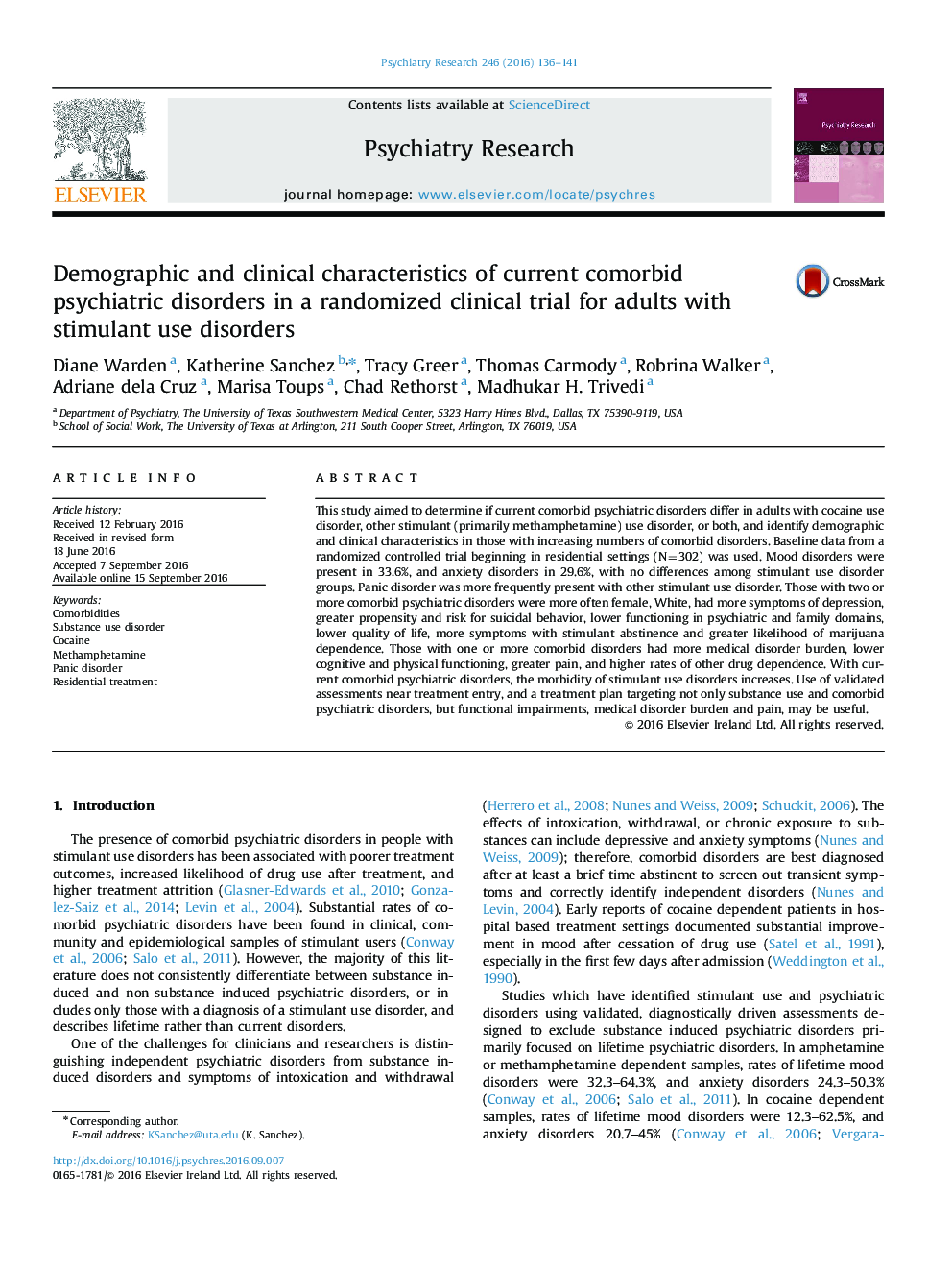| Article ID | Journal | Published Year | Pages | File Type |
|---|---|---|---|---|
| 4933773 | Psychiatry Research | 2016 | 6 Pages |
Abstract
This study aimed to determine if current comorbid psychiatric disorders differ in adults with cocaine use disorder, other stimulant (primarily methamphetamine) use disorder, or both, and identify demographic and clinical characteristics in those with increasing numbers of comorbid disorders. Baseline data from a randomized controlled trial beginning in residential settings (N=302) was used. Mood disorders were present in 33.6%, and anxiety disorders in 29.6%, with no differences among stimulant use disorder groups. Panic disorder was more frequently present with other stimulant use disorder. Those with two or more comorbid psychiatric disorders were more often female, White, had more symptoms of depression, greater propensity and risk for suicidal behavior, lower functioning in psychiatric and family domains, lower quality of life, more symptoms with stimulant abstinence and greater likelihood of marijuana dependence. Those with one or more comorbid disorders had more medical disorder burden, lower cognitive and physical functioning, greater pain, and higher rates of other drug dependence. With current comorbid psychiatric disorders, the morbidity of stimulant use disorders increases. Use of validated assessments near treatment entry, and a treatment plan targeting not only substance use and comorbid psychiatric disorders, but functional impairments, medical disorder burden and pain, may be useful.
Keywords
Related Topics
Life Sciences
Neuroscience
Biological Psychiatry
Authors
Diane Warden, Katherine Sanchez, Tracy Greer, Thomas Carmody, Robrina Walker, Adriane dela Cruz, Marisa Toups, Chad Rethorst, Madhukar H. Trivedi,
